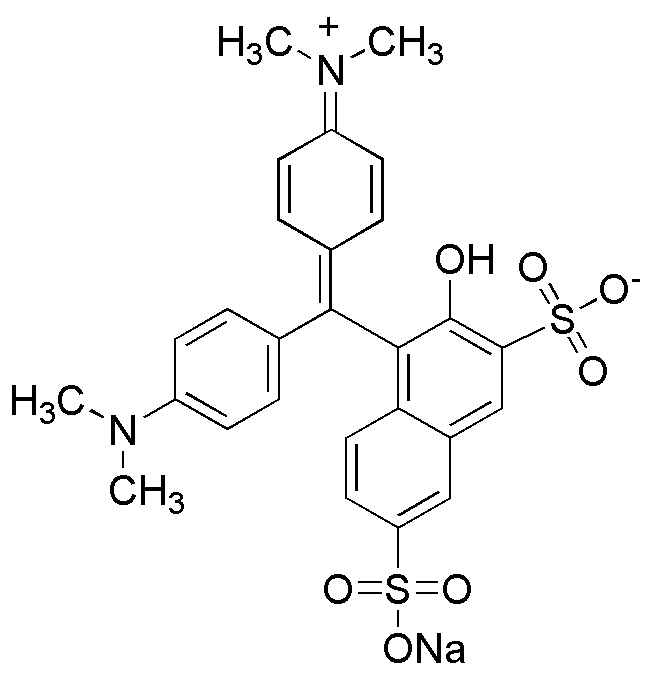Lissamine Green B is widely utilized in research focused on:
- Histology and Cytology: This dye is commonly used for staining tissues and cells, allowing researchers to visualize cellular structures under a microscope. Its strong affinity for cellular components enhances contrast, making it easier to identify abnormalities.
- Microbiology: In microbiological studies, Lissamine Green B serves as a vital stain for identifying and differentiating between bacterial species, aiding in the diagnosis of infections.
- Pharmaceutical Research: The compound is employed in drug formulation studies, particularly in assessing the permeability of drug compounds across biological membranes, which is crucial for developing effective medications.
- Environmental Monitoring: Lissamine Green B is used in assessing water quality, as it can indicate the presence of pollutants or harmful microorganisms, thus playing a role in environmental health and safety.
- Diagnostic Applications: In clinical settings, this dye is utilized in various diagnostic tests, including ophthalmic examinations, where it helps to visualize corneal defects and assess eye health.
General Information
Properties
Safety and Regulations
Applications
Lissamine Green B is widely utilized in research focused on:
- Histology and Cytology: This dye is commonly used for staining tissues and cells, allowing researchers to visualize cellular structures under a microscope. Its strong affinity for cellular components enhances contrast, making it easier to identify abnormalities.
- Microbiology: In microbiological studies, Lissamine Green B serves as a vital stain for identifying and differentiating between bacterial species, aiding in the diagnosis of infections.
- Pharmaceutical Research: The compound is employed in drug formulation studies, particularly in assessing the permeability of drug compounds across biological membranes, which is crucial for developing effective medications.
- Environmental Monitoring: Lissamine Green B is used in assessing water quality, as it can indicate the presence of pollutants or harmful microorganisms, thus playing a role in environmental health and safety.
- Diagnostic Applications: In clinical settings, this dye is utilized in various diagnostic tests, including ophthalmic examinations, where it helps to visualize corneal defects and assess eye health.
Documents
Safety Data Sheets (SDS)
The SDS provides comprehensive safety information on handling, storage, and disposal of the product.
Product Specification (PS)
The PS provides a comprehensive breakdown of the product’s properties, including chemical composition, physical state, purity, and storage requirements. It also details acceptable quality ranges and the product's intended applications.
Certificates of Analysis (COA)
Search for Certificates of Analysis (COA) by entering the products Lot Number. Lot and Batch Numbers can be found on a product’s label following the words ‘Lot’ or ‘Batch’.
*Catalog Number
*Lot Number
Certificates Of Origin (COO)
This COO confirms the country where the product was manufactured, and also details the materials and components used in it and whether it is derived from natural, synthetic, or other specific sources. This certificate may be required for customs, trade, and regulatory compliance.
*Catalog Number
*Lot Number
Safety Data Sheets (SDS)
The SDS provides comprehensive safety information on handling, storage, and disposal of the product.
DownloadProduct Specification (PS)
The PS provides a comprehensive breakdown of the product’s properties, including chemical composition, physical state, purity, and storage requirements. It also details acceptable quality ranges and the product's intended applications.
DownloadCertificates of Analysis (COA)
Search for Certificates of Analysis (COA) by entering the products Lot Number. Lot and Batch Numbers can be found on a product’s label following the words ‘Lot’ or ‘Batch’.
*Catalog Number
*Lot Number
Certificates Of Origin (COO)
This COO confirms the country where the product was manufactured, and also details the materials and components used in it and whether it is derived from natural, synthetic, or other specific sources. This certificate may be required for customs, trade, and regulatory compliance.


